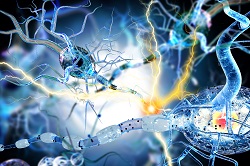Training Europe’s next generation of neural engineers
Neural engineering is a new discipline that combines engineering, mathematics, physics and neuroscience to develop brain-computer interfaces, cognitive computers and neural prosthetics. As an emerging field, most scientists pursuing related topics have strengths in one or two areas, but have not received broad multidisciplinary training as it is relatively hard to come by. The central aim of the NETT (Neural Engineering Transformative Technologies) project has therefore been to expose early career researchers to different opportunities in both academia and industry, in part by providing input from experienced visiting researchers and corporate research teams. The research fellows supported with NETT funding have successfully generated transformative technologies related to speech recognition, robots with cognitive and social skills, and brain-computer interfaces. ‘The advances achieved so far could lead to the development of new healthcare technologies, new diagnostic tools and new software applications for neurological researchers,’ says project coordinator Stephen Coombes, Professor of Applied Mathematics at the University of Nottingham, UK. ‘We could imagine that in the near future, this research could lead to the development of brain-controlled prosthetics, robotic assistants, thought-controlled computers and speech recognisers.’ For example, researchers have achieved a better understanding of the effect of transmission delays in the communication between certain brain areas, which could have implications in the treatment of neurological diseases. Novel algorithms for multi-photon scanning of neural tissue could also lead to better diagnostic tools. ‘The implementation of a new neural mass model could have applications in the treatment of neurological disorders, and in particular epilepsy,’ says Coombes. ‘Advances have also been made in detecting the intention to walk in stroke patients; this could have implications for rehabilitation therapies.’ Other breakthroughs include the development of a synchronous dual-arm movement planner for a humanoid robot and the open source platform SPIKY, which will enable researchers to monitor synchronisation in the firing of neurons. Many of these, and other innovations, have appeared in papers and peer-reviewed journals. Some seven full partners and 11 associated partners including large and small companies joined forces to conduct the structured, industry-focused training and mentorship through internships and secondments addressing real-world problems. ‘We have sought to increase the employability of fellows working on this project via internships with industry partners, and through a dedicated training programme in business, academic and social skills,’ explains Coombes. ‘We’ve also tried to demonstrate the interrelatedness of various project areas throughout the consortium, and also tried to appeal to wider scientific community and indeed the general public through regular study groups, workshops and public lectures.’ By combining the expertise and infrastructure of a multidisciplinary training network in neural engineering, the NETT project aims to foster a sustainable high level of innovation, and consolidate Europe’s position as a leader in an emerging industrial field. The NETT project is due for completion in August 2016. For further information please visit: NETT project website
Countries
United Kingdom



